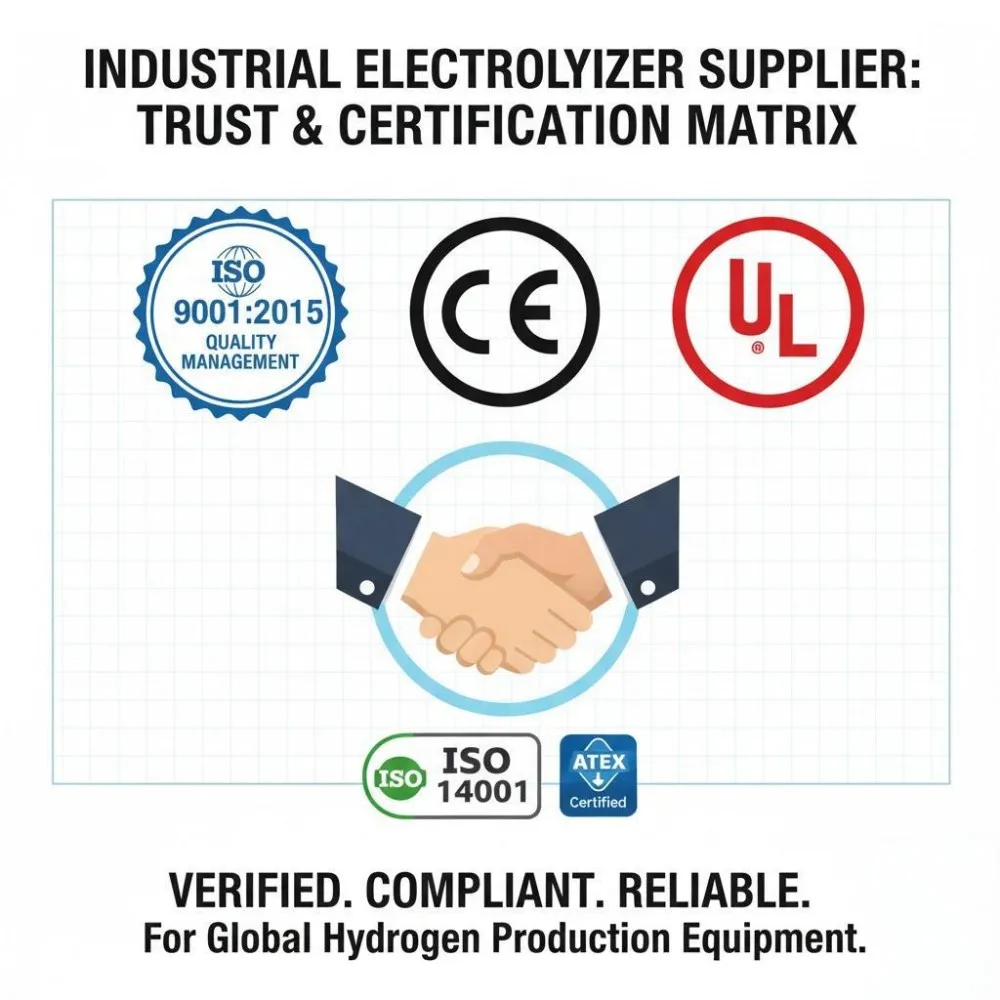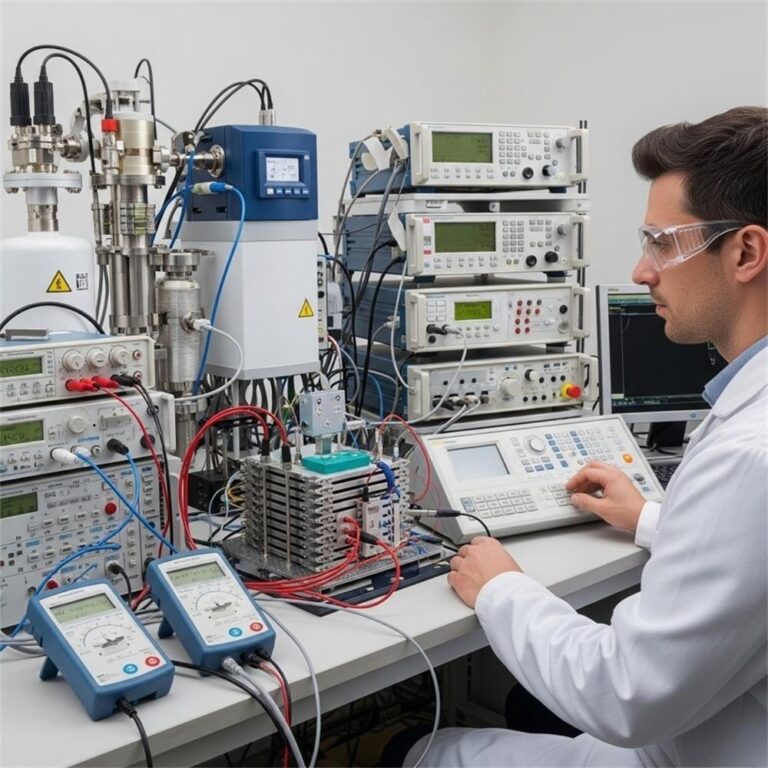Unlocking Peak Performance: The Ultimate Guide to High-Purity Industrial Hydrogen Generators
Discover how to maximize production efficiency and achieve ultra-high purity with industrial hydrogen generators. Explore technologies, case studies, and best practices in this expert guide.
I. Introduction
As the global shift toward cleaner energy intensifies, hydrogen has rapidly become a cornerstone of industrial transformation. According to the International Energy Agency (IEA), the demand for hydrogen could increase sixfold by 2050, driven by its critical role in decarbonizing hard-to-abate sectors.
Hydrogen isn’t just a buzzword—it’s an essential element in key industries such as petroleum refining, chemical production, steel manufacturing, and fuel cell technologies. Whether it’s purifying pharmaceuticals or powering zero-emission vehicles, hydrogen’s versatility is unmatched.
Yet, amid this rise in demand, industries face a pressing dilemma: how can they produce high-purity hydrogen efficiently and cost-effectively? Traditional methods often fall short in either purity or production scalability, creating bottlenecks in operations.
Enter the industrial hydrogen generator—a technological solution designed to provide continuous, on-site, high-purity hydrogen with enhanced production efficiency. This guide unpacks everything you need to know about these systems, from essential technologies to real-world applications and optimization techniques.
II. The Crucial Role of Hydrogen Purity in Industrial Applications
Hydrogen’s utility hinges not only on availability but on purity. The slightest contaminants—like CO, H₂O, or CH₄—can dramatically impair sensitive downstream processes.
Why Purity Matters:
1. Electronics Manufacturing:
In semiconductor fabrication, trace metals or impurities can lead to defective wafers, costing millions in wasted product. Ultra-pure hydrogen (99.9999%) is essential for high-yield production.
2. Fuel Cell Vehicles (FCVs):
Fuel cell membranes are susceptible to catalyst poisoning from CO. This requires hydrogen of at least 99.999% purity to maintain efficiency and longevity.
3. Pharmaceuticals & Chemicals:
The synthesis of critical compounds demands a contaminant-free environment to ensure product efficacy and compliance with regulatory standards.
Impacts of Impurities:
| Impurity | Effect on Process |
|---|---|
| CO (Carbon Monoxide) | Catalyst poisoning in fuel cells |
| H₂O (Water Vapor) | Corrosion and reduced efficiency |
| CH₄ (Methane) | Interference in reforming reactions |
Industry Standards:
- Fuel cells: 99.999% (5.0 grade)
- Electronics: 99.9999% (6.0 grade)
- General industry: 99.9% to 99.999%
Research Insight:
A study published in Hydrogen Energy Journal found that switching from 99.9% to 99.999% purity reduced catalyst degradation by over 45% in PEM fuel cells.
III. Technologies Driving High-Efficiency Hydrogen Production
Industrial hydrogen generators are the backbone of modern hydrogen infrastructure. They leverage a range of technologies, each with distinct efficiency and purity profiles.
1. Steam Methane Reforming (SMR)
- Process Overview: Methane reacts with steam over a catalyst at high temperatures (~800°C) to produce hydrogen and CO₂.
- Efficiency: Can reach up to 75–80% thermal efficiency with heat recovery systems.
- Purity: Requires downstream purification (e.g., PSA units) to meet 99.999% standards.
Pros:
✅ Low cost per kg
✅ Established infrastructure
Cons:
❌ CO₂ emissions
❌ Purity dependent on additional systems
2. Electrolysis (PEM, Alkaline, SOEC)
- Process Overview: Splits water into hydrogen and oxygen using electricity.
- Types:
- PEM: High-purity output, fast response times.
- Alkaline: Cost-effective, but slower to ramp up.
- SOEC: High efficiency at high temps, ideal for industrial heat integration.
Purity Advantage:
Electrolyzers naturally produce 99.999% hydrogen without complex purification chains.
Efficiency Insight:
PEM electrolyzers powered by renewables can achieve >70% efficiency, with potential to improve further through heat integration and AI-based control.
3. Autothermal Reforming (ATR)
- Process Overview: Combines partial oxidation and steam reforming.
- Efficiency: Slightly higher than SMR due to internal heat balancing.
- Purity: Requires PSA or membrane purification.
4. Emerging Technologies
- Methane Pyrolysis: Hydrogen without CO₂ emissions.
- Biological Production: Microbial electrolysis and algae-based hydrogen—still in experimental stages.
Comparison Table:
| Technology | Efficiency (%) | Purity Range | Green Potential |
|---|---|---|---|
| SMR | 75–80 | 98–99.9% | Moderate (with CCS) |
| PEM Electrolysis | 65–75 | 99.999%+ | High (with renewables) |
| ATR | 80+ | 98–99.9% | Moderate |
| SOEC | 75–85 | 99.999% | High |
IV. Case Studies: Success Stories in High-Purity, High-Efficiency Hydrogen Production
Case Study 1: Toyota Fuel Cell Facility, Japan
- Need: Fueling fleet of hydrogen-powered vehicles
- Tech Used: PEM Electrolyzer powered by solar panels
- Results:
- Purity: 99.999% hydrogen output
- Efficiency Gain: Reduced energy cost by 30%
- Impact: Enabled over 100 vehicles to operate with zero emissions
Case Study 2: BASF Chemical Plant, Germany
- Need: On-demand hydrogen for chemical synthesis
- Tech Used: SMR with advanced PSA purification
- Results:
- Purity: Achieved 5.0-grade hydrogen
- Efficiency: 82% system-wide with waste heat recovery
- Cost Savings: Reduced raw gas purchases by 40%
Case Study 3: Plug Power Green Hydrogen Hub, USA
- Need: Industrial-scale clean hydrogen
- Tech Used: Alkaline electrolyzers integrated with wind power
- Results:
- Purity: 99.999% at 20 tons/day
- Sustainability: Eliminated 50,000 tons of CO₂ annually
V. Optimizing Performance: Maintenance and Best Practices for Industrial Hydrogen Generators
Maintaining an industrial hydrogen generator is just as critical as selecting the right one. Without regular checks and best practices in place, even the most advanced systems can falter—leading to decreased purity, reduced output, and costly downtime.
Preventative Maintenance: The First Line of Defense
Regular preventative maintenance ensures your system runs efficiently and safely. Here’s a breakdown of essential tasks:
- Catalyst Inspection & Replacement: Over time, catalysts degrade due to fouling or sintering, reducing efficiency. Replace them based on manufacturer recommendations.
- Filter and Membrane Checks: Blocked or degraded filters/membranes can hinder purification. Perform routine inspections and replacements.
- Leak Detection: Hydrogen leaks are dangerous and wasteful. Use hydrogen-specific detectors and thermal imaging to monitor joints, valves, and pipelines.
- Compressor Service: Maintain oil levels, inspect seals, and check pressure consistency.
Monitoring and Control Systems
Real-time monitoring is vital for early detection of anomalies and for maintaining product quality.
- Key Parameters to Monitor:
- Temperature & Pressure: Maintain optimal reaction conditions.
- Flow Rate: Monitor for blockages or system inefficiencies.
- Purity Levels: Use in-line analyzers to track gas composition continuously.
- Digital Integration:
- SCADA systems and IoT-enabled sensors allow for predictive maintenance and automated alerts.
- AI algorithms can adjust parameters dynamically for optimal performance.
Troubleshooting Common Issues
| Problem | Likely Cause | Solution |
|---|---|---|
| Drop in Purity | Contaminated feedstock or filter failure | Check filtration and replace membranes |
| Low Output | Catalyst degradation or compressor malfunction | Inspect and replace worn components |
| Pressure Fluctuations | Leak or valve failure | Conduct leak detection and reseal joints |
Safety Protocols
Hydrogen is highly flammable, so rigorous safety procedures are non-negotiable:
- Install ventilation systems in all enclosed generator areas.
- Equip staff with personal gas detectors.
- Implement emergency shut-off systems and conduct regular safety drills.
Recommended Maintenance Checklist (Monthly)
| Task | Frequency |
|---|---|
| Visual Inspection | Weekly |
| Leak Testing | Bi-weekly |
| Filter Replacement | Monthly |
| Catalyst Analysis | Quarterly |
| System Calibration | Monthly |
| Safety Drill | Quarterly |
📘 Tip: Refer to manufacturer-specific manuals and training modules such as those from Nel Hydrogen or Proton OnSite for tailored procedures.
VI. Frequently Asked Questions (FAQs)
1. What is the typical purity level achieved by industrial hydrogen generators?
Most modern systems, especially PEM electrolyzers and PSA-purified SMRs, can achieve purity levels of 99.999% (5.0 grade) or higher. Specific technologies like cryogenic purification can push this to 6.0 grade (99.9999%).
2. How can I increase the efficiency of my hydrogen production system?
You can boost efficiency by:
- Recovering waste heat from reformers.
- Optimizing catalyst performance.
- Integrating renewable energy sources with electrolyzers.
- Using AI for process control.
3. Is electrolysis more efficient than SMR?
Not necessarily. While SMR is currently more thermally efficient and cost-effective, electrolysis—especially with renewable energy—is more sustainable and produces higher purity hydrogen with minimal emissions.
4. Can I use the same hydrogen generator for different applications?
It depends on the purity requirements of your applications. If you’re serving both chemical synthesis and fuel cells, you’ll need versatile purification stages or multiple generation pathways.
5. What are the safety risks of industrial hydrogen generators?
The main risks include:
- Leaks (due to hydrogen’s small molecular size),
- Explosion hazards, and
- High-pressure system failures.
Mitigate them with robust sensors, emergency shutdown systems, and certified training programs.
6. How often should a hydrogen generator undergo professional servicing?
While basic maintenance should be conducted monthly, a full professional service is recommended at least once a year, or every 4,000–6,000 operating hours, depending on system complexity and usage intensity.
VII. Conclusion
Key Takeaways
- Hydrogen purity is a non-negotiable factor in sensitive industrial processes—from fuel cells to pharmaceuticals.
- Industrial hydrogen generators, when chosen and maintained correctly, can provide on-site, high-purity, cost-efficient hydrogen.
- Technologies like PEM electrolysis and SMR with PSA each serve specific needs—choose based on application, budget, and sustainability goals.
- Best practices in monitoring, maintenance, and safety are crucial to maximize performance and minimize operational risks.
The Road Ahead
As global industries move toward decarbonization, hydrogen will remain a key pillar. The future will likely see:
- Deeper integration with renewables,
- Emerging green hydrogen technologies, and
- Wider adoption of AI and IoT for process optimization.
Call to Action
Now is the time to evaluate your hydrogen production strategy. Whether you’re launching a new facility or upgrading an existing one:
- Assess your purity and efficiency needs.
- Consult hydrogen technology experts.
- Invest in modern, scalable, and safe hydrogen generators tailored to your goals.
Your move toward cleaner, more efficient operations starts here.







